HOME > TREATMENT GUIDE
A Guide to
Nail Fungus Treatment

This easy-to-follow treatment guide is the result of years of experience and research on the best ways to alleviate nail discoloration and fungal regrowth.
Before we start, however, it’s important to learn the truth behind some widely-held misconceptions.
Despite widespread belief, it is impossible to get rid of nail fungus overnight, even with laser therapy or prescription medicines. You should expect new, fungus-free nails with two to six months of treatment, depending on the severity of the infection and the length of time it takes to regrow healthy nails.
Nail fungus isn’t regarded as a serious condition, and it is highly treatable with OTC options that contain certain ingredients. If you’re serious about treating nail fungus, the information in this guide will give you valuable insight, help you set realistic expectations, and keep you from making common mistakes.
While prevention is the preferred course of action, this guide assumes that you already have nail fungus.
When we discuss FDA-approved antifungal ingredients, we’ll refer to the monograph (source 1) for using antifungal ingredients at allowable concentrations and levels. Not every OTC treatment contains FDA-approved antifungal ingredients, and in this guide, you will evaluate your over-the-counter options. Treating nail fungus is a time-consuming and complicated process, and there are no shortcuts. However, if you follow this guide closely, you may avoid common mistakes and achieve a favorable outcome.
Take a Proactive Stance
It’s very important to keep nail implements sanitized. Begin by disinfecting nail files, clippers, and other utensils with isopropyl alcohol and drying them thoroughly. Sanitize utensils between uses when caring for infected nails, and don’t share them with others.
Time Required for Treatment
As previously mentioned, you won’t see treatment results right away. Therefore, it’s important to be patient and follow the daily treatment regimen. With time, new and healthy nails should begin to replace the infected areas. The severity of the infection, the treatment option you choose, and your consistency in daily application all play a crucial role in the regrowth of healthy nails. It’s common to see initial improvement within several weeks, with noticeable results often coming within two to three months.

Step 1: Assemble Your Materials
This treatment method requires an OTC treatment that includes an FDA-approved antifungal ingredient such as tolnaftate, undecyclenic acid, or miconazole nitrate.
WHAT YOU NEED:
- Topical solution with one of the aforementioned active ingredients to penetrate the infected nail layers.
- Nail clippers
- Metal nail file
Crystal and acrylic files aren’t recommended.
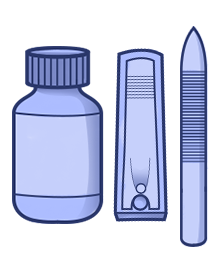
Step 2: Trim the Nails
IMPORTANT: Trim the nails carefully and keep it short. Why? Two things:
- To remove infected nail parts
- To simplify the application of topical solutions
Fungi live within nail layers and in surrounding skin. Cutting the nails short will remove most of the fungus, promoting new and healthy nail growth. Gently file the top, sides, and front parts of the nails to remove the uppermost infected layers. This step allows the topical solution to penetrate deep into the nail bed.
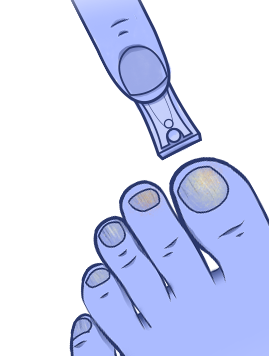
Step 3: Soaking, Cleansing and Scrubbing
Immerse the nails in warm, soapy water for at least two minutes to loosen dirt particles and soften the cuticles. Wash the hands or feet normally, using a nail brush to get to the areas underneath the nails.
Infected nails may be sensitive, especially if there’s swelling. Be sure to wash thoroughly but gently.
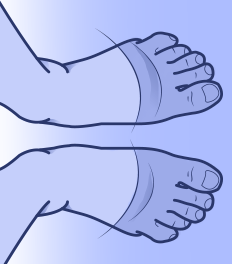
Step 4: Drying the Affected Areas
Dry the nails before applying the topical solution. While a blow dryer can quickly remove moisture, it’s not necessary. Once the nails are dry, carefully read the instructions on the topical treatment you’ve chosen.
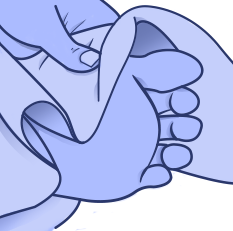
Step 5: Application
For the purposes of this guide, we’ll assume the use of a topical solution containing 1% tolnaftate.
- Choose a solution in a dropper-tip bottle because it reduces the risk of contamination or dilution of the active ingredient.
- Apply a drop or two to affected areas, rubbing the solution around ridges, nail plates, and under the nail tip.
- Allow the solution to dry completely before putting socks on; drying time may vary slightly depending on nail size, number of drops applied, and ambient humidity.
- When applying the solution, it’s safe to get some on the surrounding skin. However, if nails are splitting, brittle, or cracked, consult the topical treatment’s instructions before continuing.
If discomfort or irritation occurs, stop the treatment and get a doctor’s opinion.
Click Here for an in-depth product comparison chart to help you make an informed decision.
* Pricing, User Reviews, Product Guarantees, Ratings
After you’ve tried a treatment, come back to our site and leave feedback to improve our reviews’ quality and reliability.
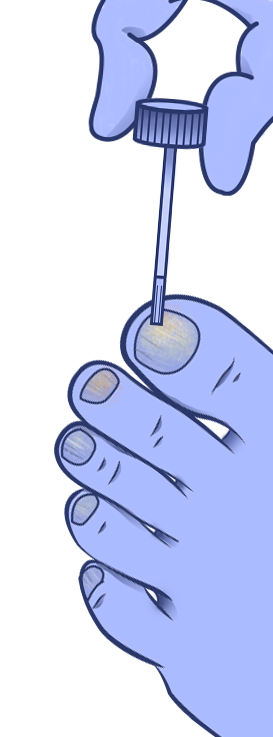
Step 6: Preventive Maintenance
There are various maintenance formulas designed to prevent nail fungus infections, but they’re not a necessary part of our healthy nail guide. Refer to the prevention tips we discussed earlier and follow these DO’s and DON’Ts:
![]() Be sure to change socks and footwear regularly
Be sure to change socks and footwear regularly
![]() Sanitize all nail care implements and try if possible to determine the source of the nail fungus.
Sanitize all nail care implements and try if possible to determine the source of the nail fungus.
![]() If the local climate makes sandals unsuitable, or if you don’t feel comfortable wearing them during treatment, consider rotating among several pairs of ventilated sneakers.
If the local climate makes sandals unsuitable, or if you don’t feel comfortable wearing them during treatment, consider rotating among several pairs of ventilated sneakers.
![]() Consider wearing moisture-wicking socks to prevent fungal infections.
Consider wearing moisture-wicking socks to prevent fungal infections.
![]() Avoid staying and don’t go barefoot at communal areas such as saunas, pools, gym locker rooms, and dormitories which are common sources of fungal infection.
Avoid staying and don’t go barefoot at communal areas such as saunas, pools, gym locker rooms, and dormitories which are common sources of fungal infection.
*Even if you follow all the tips we’ve mentioned, there’s no way to guarantee that the fungus won’t return. However, following this guide will decrease the likelihood of subsequent infections and keep nails healthy following a successful round of treatment.

Expected Results
It’s important to have realistic expectations on healthy nail growth, as the average nail regrowth rate varies from one person to another. While some people recover quickly, most will see visible results around the two- to three-month mark as regrowth comes from the cuticle or base of the nail.
Conclusion:
The longer you delay treating a nail fungus infection, the worse it will get. It’s vital to proactively prevent the fungus before it becomes a problem. However, if it’s too late for preventive measures, you should start treatment as early as possible. As stated earlier in our guide, it’s crucial to use a topical treatment containing an FDA-approved antifungal ingredient; several of these treatments are reviewed on our website.
Know your nail fungus
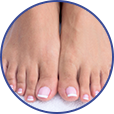
What is it? How did you get it? How does it look? What color is it? Once you know these things, what should you do?
Get rid of nail fungus
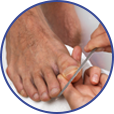
No, nail fungus won't haunt you forever. Learn how to finally kill it with our guidance.
What to buy
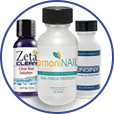
We'll review various over-the-counter nail fungus treatments, highlighting what we liked and didn't like about each.

Your Source for Clear,
Healthy Nails. Expert Reviews,
Tips & Solutions. Empowering
You to Eliminate Nail Fungus
for Good!
